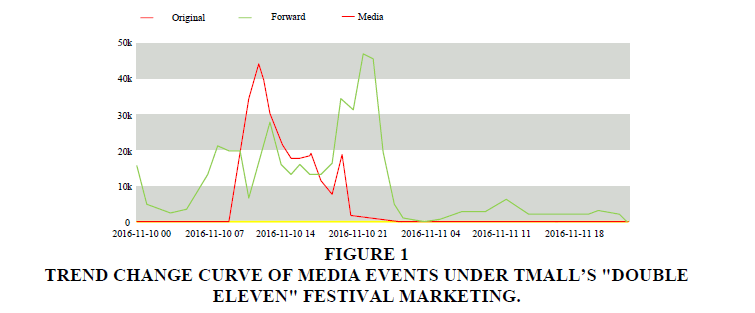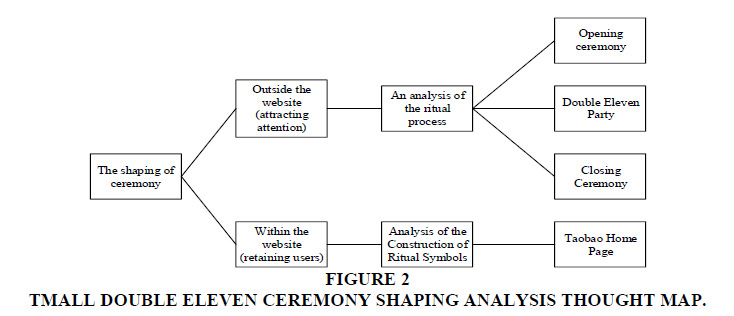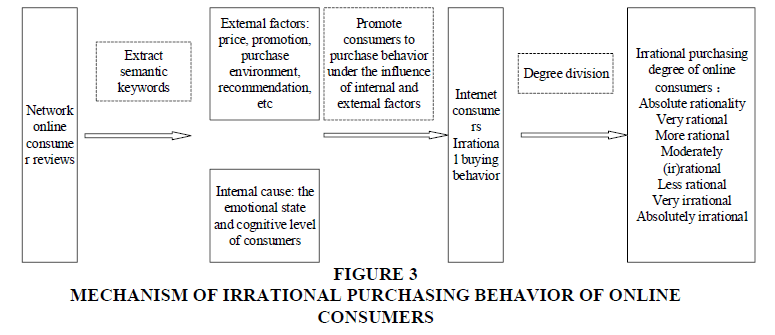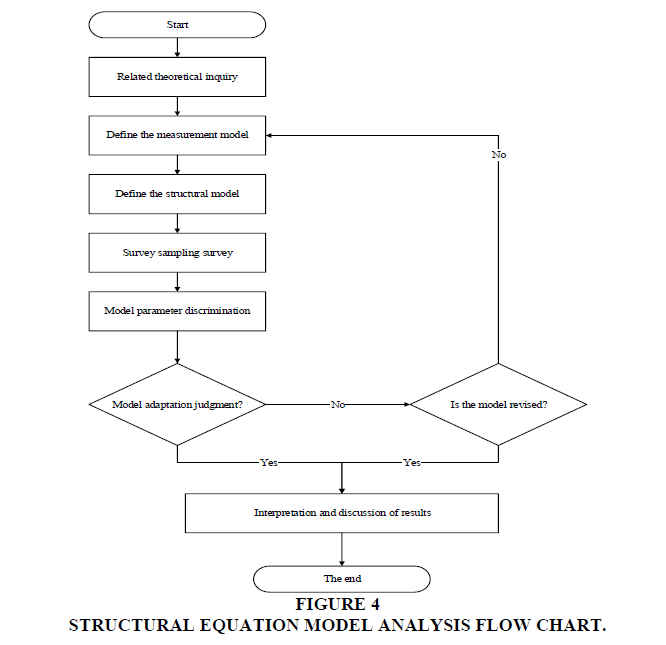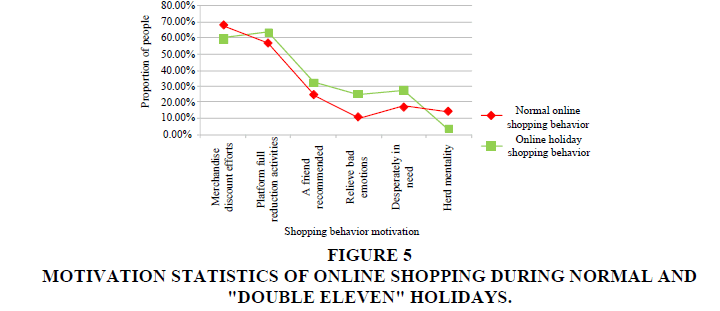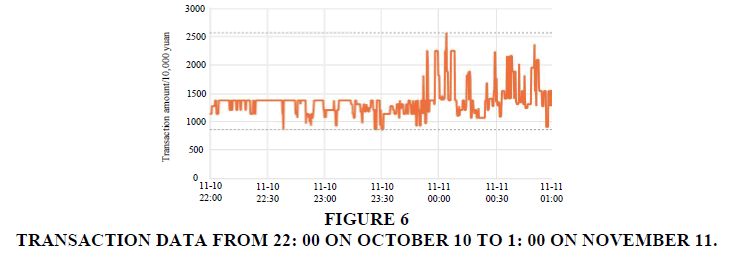Review Article: 2022 Vol: 25 Issue: 2S
The influence of online festival marketing on consumers' irrational consumption from the perspective of communication ceremony taking tmall's " double eleven" as an example
Xu Ye, Universiti Kebangsaan Malaysia
Shimin Huang, Chengdu Jincheng College, Chengdu
Rong Hou, Auburn University
Nor Asiah Binti Omar, Universiti Kebangsaan Malaysia
Citation Information: Ye, X., Huang, S., Hou, R., & Omar, N.A.B. (2022). The influence of online festival marketing on consumers' irrational consumption from the perspective of communication ceremony taking tmall’s "double eleven" as an example. Journal of Management Information and Decision Sciences, 25(S2), 1-11.
Keywords
Spreading the Concept of Ritual, Network Marketing, Festival Marketing, Consumer Behavior, Irrational Consumption
Abstract
This paper aims to explore the influence of online festival marketing on consumers’ irrational consumption. From the perspective of communication ceremony, this paper takes tmall "double eleven" as an example to investigate the influence relationship between the two. This study introduces the concept and development process of the concept of communication ceremony, respectively from the concept and characteristics of two aspects, aiming to understand the current development status of online festival marketing and the shaping of communication ceremony. This paper analyzes the influence mechanism of consumers' irrational consumption behavior. Supported by the above theory, this paper takes the online festival marketing as the independent variable and the consumer irrational consumption as the dependent variable, proposes the hypothesis, and constructs the corresponding structural equation model. Through the statistics of relevant data, the empirical conclusion is drawn. The commodity discount strength, platform full reduction activities, limited time and advance payment consumption mode in online festival marketing can promote consumers’ irrational consumption to a certain extent, that is, online festival marketing exerts a positive impact on consumers' irrational consumption.
Introduction
With the unprecedentedly rapid development of Internet technology, online shopping has gradually replaced the traditional way of shopping and become one of the main ways of shopping for consumers. Due to the popularity of online shopping, a large number of irrational online consumption behaviors emerge. However, the irrational consumption of consumers is a “double-edged sword”, which can provide higher economic profits for the merchants on the network platform and dominate an important role in the development of the network marketing field. Nevertheless, for individual consumers, they need to bear the consequences of irrational consumption, such as paying for unsatisfactory products and hoarding a large number of products of the same type (Liu, 2020; Zhang, 2020; Ren, 2020).
The research on irrational consumption behavior at home and abroad has been put forward as early as the 1940s, which has gone through numerous stages, such as unplanned purchase, product category research, and consumer research (Wang, 2019; Deng, 2020; Zhou, 2020). From the perspective of communication ceremony, various new media means provide technical support for online festival marketing, and expand the communication scope of online festival marketing, thus realizing the unconstrained marketing means. Modern scholars have found that consumers’ irrational consumption behavior will be influenced by a lot of factors. Among them, online festival marketing is one of the important influencing factors. As a result, from the perspective of communication rituals, this article takes Tmall’s "Double Eleven" as an example to analyze the influence of online festival marketing on consumers' irrational consumption. Moreover, combining the results of the impact analysis can provide a reference for the marketing of Tmall Mall and the rational consumption of consumers.
Introduction to the Theory of Communication Ritual
The concept of communication ritual was proposed by James Carey, who is a famous American communication scholar. The concept of communication ritual consists of two parts including communication and ritual. The concept of communication refers to a process in which information can be transmitted and transmitted in space to control people and distance. In the ritual concept of communication, communication is regarded as the process of creating and sharing culture, and its purpose is to participate and experience (Wu, 2019; Fang, 2019; Zhang, 2019; Wei, 2020). Regarding the phenomenon of communication, the ritual view is not limited by the form and content of communication behavior, but discusses this phenomenon from a longer period and a broader perspective. By integrating the communication view and the ritual view, the communication effect and the sense of ritual are simultaneously given to a thing, which plays an important role in the development of marketing (Yu, 2020; Wang, 2019; Fang, 2019).
Analysis Of The Concept And Current Situation Of Online Festival Marketing
The Concept of Online Festival Marketing
Online festival marketing belongs to one of the products of e-commerce. Online transaction e-commerce can be divided into two types, respectively, comprehensive type and vertical type. The comprehensive type has a huge consumer group and a stable website platform. Vertical e-commerce, represented by "Beibei" and "Jumei Youpin" platforms, concentrates more attention on segmentation (Fang, 2019; Chen, 2019; Sun, 2018). For all kinds of online shopping platforms, in order to improve the active degree of customers on the platform, and then increase the online shopping transaction volume, they will fully analyze consumers' holiday psychological and emotional needs, and a series of marketing activities will be put forward and implemented during online festivals. Currently, the festival marketing methods of China's major online shopping platforms can be roughly categorized into four types. The first one takes Chinese traditional festivals as the breakthrough point, promotes consumers’ buying behavior under the banner of patriotism and the opportunity of spreading Chinese traditional culture (Constantinou, 2020; Predanocyová, 2019; Miriasov, 2019; Zhao, 2021). Examples of successful online festival marketing of this type contain New Year’s Day and Qixi Festival. The second type is based on China's legal holidays or modern festivals to achieve the integration of modern thinking and consumer culture, increase the sense of ritual in life, and stimulate consumers’ purchase needs. This type of representative festival is Queen's Day. The third type introduces foreign festivals in foreign countries to satisfy the psychological demands of some consumers to understand Western culture as well as to create Valentine's Day, Christmas, etc. (Smagulov, 2020; Zhen, 2019). The last one refers to that in the absence of the above festivals, in order to increase sales nodes, e-commerce takes the initiative to give special significance to a certain period of time, that is, e-commerce Festival making, such as tmall double eleven carnival and Jingdong 618. At this stage, festival making marketing has become a marketing strategy that e-commerce tends to use more. With tmall's "double eleven" as an example, this paper analyzes the characteristics of tmall's marketing communication under the double eleven festival marketing.
Characteristics of Tmall's "Double Eleven" Network Festival Marketing Communication
At present, Tmall's "Double Eleven" festival is full of fancy marketing. To cater to the carnival atmosphere, various network technologies and new media platforms are employed, aiming to expand the publicity and marketing strategies of Tmall's "Double Eleven" festival. During Tmall's "Double Eleven" festival, consumers are given preferential activities such as red envelopes and rights as well as interests through online festival promotions (Deng, 2018; Houqiang, 2018; Wiech, 2021). These entrances will be displayed on the Tmall Mall website with Tmall’s "Double Eleven" festival as the carrier. Some online shopping platforms cooperate with TV stations and video players to host Tmall’s "Double Eleven" holiday party. During the party, interactive activities such as on-site lottery and red envelope grabbing are added to realize the organic combination and connection between online shopping and the party. Moreover, it can increase the ratings of TV stations, and simultaneously realize the promotion of Tmall’s "Double Eleven" festival marketing activities and achieve a win-win situation (Luo, 2019). In addition to the above-mentioned ways, you can also invite stars or Internet celebrities to join in the promotion work on the basis of different media. For example, you can open the shopping live broadcast in the online shopping platform, and distinguish the activity intensity between the live broadcast room and the ordinary platform. Due to the large coverage of tmall.com and the large number of participants, all netizens can be covered with one-time publicity investment, with high publicity efficiency and good effect (Wang, 2018). Apart from that, you can also use the "original price" to create a discount atmosphere with the aim to capture people's hearts. The information of Tmall Weibo from November 10 to 12, 2020 was collected, and the trend of media hot topics during Tmall Double Eleven Festival is observed and summarized, as shown in Figure 1.
According to Figure 1, the topic volume of tmall Weibo reached a peak at 10:00 on the 10th, which was mainly due to the launch of the "double eleven" Festival Party of tmall. After the start of the party, the maximum number of Micro-blog forwarding reached 69458, and the topic data decreased with the end of the party. In the meantime, the opinion leaders of Weibo to guide public opinion include over 40 media, celebrity Weibo and grassroots big V. The highest repost on Tmall Double Eleven official Weibo reached 43,500, also becoming the focus of the topic (Wenwei, 2018; Liu, 2020; Turchyn, 2019; Akhmetova, 2018; Raiko, 2019).
Shaping the Communication Ceremony of Tmall's "Double Eleven" Festival Marketing
Taking the Double Eleven in Tmall's Double Eleven Festival as an example, the idea of shaping its communication ceremony is shown in Figure 2.
Through the analysis of Tmall’s "Double Eleven" holiday marketing methods and changes in intentions, it can be found that the introduction of soft cultural concepts can stimulate consumers' hard consumption behaviors and allow consumers to enjoy the benefits of shopping from a psychological perspective. A sense of pleasure. The communication ritual view of Tmall’s "Double Eleven" festival marketing involves functions such as metaphor, connotation, and communication success (Alexandra, 2019; Starostin, 2020; Changlu, 2019).
At the metaphorical level, a series of communication behaviors, such as the Spring Festival, New Year’s Day and other traditional festivals all have a strong sense of ritual. With the help of the ritual of communication, they realize the sharing of meaning, and finally develop a direct connection with people's daily life. After several years of development, e-commerce self-made year-end festival gradually integrates traditional festivals and culture into it, aiming to gather consumers to have a common belief and let consumers realize the transmission of information in the ritualized field.
From the perspective of communication ceremony, Tmall network platform emphasizes the fairness and initiative of consumers in the process of consumption, and thus consumers can get full freedom and right to buy and not buy in the virtual network world. Equal participation is conducive to the generation of group belonging, thus creating a common belief. In terms of Tmall e-commerce, it is conducive to consolidating consumers' awareness of the brand.
Additionally, from the perspective of communication success standards, the main purpose of the concept of ritual is to stimulate the common consciousness of consumer groups, establish group emotions, realize the true integration of individuals and groups, and guide consumers to maintain unity in both emotions and consumption willingness.
An Overview Of The Theory Of Irrational Consumer Behavior
Irrational consumption behavior is a concept corresponding to rational consumption behavior, which is embodied in impulsive consumption, blindly following the trend in economic life. Among the irrational consumption behavior types, the non-cautious consumption behavior violates the principle of prudence and is influenced by the factors such as consumers’ passion consumption. Driven by psychological factors such as comparison and vanity, consumers tend to commit exhausted consumption behaviors, which can be considered as the face-saving consumption behaviors of consumers. The demand of this consumption behavior may be a false demand, and this behavior often generates the phenomenon that the price rises too fast and unreasonable (Zhang, 2019). Moreover, Tmall’s "Double Eleven" holiday marketing belongs to a kind of "irrational" consumption in the irrational consumption of consumers, which is the conformity, subconscious behavior of consumers under the interference of holiday marketing signals. Thoughtful consumption, due to the low price, meets part of the needs of consumers, but fails to match the actual demand.
The main factors affecting consumers' irrational purchasing behavior are external incentives, internal incentives and consumers' irrational degree (Kazak, 2019). Figure 3 shows the specific mechanism of action.
Irrational purchases in Tmall's “Double Eleven” festival can be classified into four types, including pure irrational purchases, reminding irrational purchases, suggesting irrational purchases and planning irrational purchases. Among them, the first category refers to the irrational impulse buying behavior caused by consumers' emotional demand and shopping desire due to the novelty of a commodity (Haihong, 2018). This kind of impulsive shopping is not common in real life. The latter refers to the condition that consumers may have impulse buying behaviors when they see a product, and consider that they may miss it, or recall the purchase intention generated when they previously learned about the product’s advertisement or other information. The key to this problem is that consumers can recall the information they know before seeing a product. Third, it refers to the impulse buying behavior that consumers can associate with their demand for certain commodity upon seeing it for the first time. In addition, suggested purchase means that consumers have no intention to buy a certain product in this shopping behavior, but purchase it due to reasons such as price discount and strong promotion while the product originally intended to be purchased by the "buyer".
An Empirical Analysis of the Influence of Tmall's "Double Eleven" Festival Marketing on Irrational Consumption
From the perspective of communication ceremony, based on the above-mentioned mechanism and related concepts, Tmall's "Double Eleven" holiday marketing is set as an independent variable with consumers' irrational consumption as a dependent variable (Yeting, 2019). This empirical analysis chooses to propose hypotheses, construct models, hypotheses, and model verification. Under the dialectical concept, the empirical analysis on the transaction data and other relevant data during Tmall’s “Double Eleven” Festival in recent years shows the impact of marketing on irrational consumption.
Put Forward Research Hypothesis
According to the marketing methods used by tmall in the "double eleven" festival, the corresponding research hypotheses are proposed in this study. The setting of research hypotheses is shown in Table 1.
| Table 1 Research Hypothesis Setting Table |
|||
|---|---|---|---|
| Hypothesis number | Independent variable | Dependent variable | Influence relationship |
| Hypothesis 1 | Merchandise discount | Irrational consumption degree of consumers | Positive correlation |
| Hypothesis 2 | Platform full reduction activities | Positive correlation | |
| Hypothesis 3 | Limited time spike | Positive correlation | |
| Hypothesis 4 | Consumption mode of advance payment | Negative correlation | |
Taking Hypothesis 1 as an example, in Tmall's “Double Eleven” holiday marketing, price discount is a relatively common marketing method. Brands can directly sell their normally sold products to consumers by lowering their selling prices, which can take a variety of forms, such as direct price reduction and buying one and getting one free. Economically, when a brand offers a discount on a product, the price of the product is lower than its psychological maximum price, which will increase the consumer’s shopping volume after generating a consumption surplus.
Construction of Research Structural Equation Model
Modeling and testing is one of the common analysis methods of multivariate statistics, which integrates factor and path analysis to explore the relationship between variables. The construction equation model is effective, which needs to be established on the basis of theory and experience. If the model needs to be modified, it also needs to be adjusted in accordance with relevant theories (Knysh, 2018). The observed variables in the measurement model can be obtained by direct measurement, while the potential variables need to be abstractly defined by the characteristics formed between the observed variables. One potential variable in the model can be estimated only when there are at least two observed variables. The marketing variables of Tmall "Double Eleven" Festival can be expressed by Formula 1.

Where Y is the Tmall "Double Eleven" festival marketing variable,  is the external latent
variable, that is, the dependent variable, the matrix
is the external latent
variable, that is, the dependent variable, the matrix  represents the coefficient matrix of the
strength of the relationship between X and
represents the coefficient matrix of the
strength of the relationship between X and  , and
, and  denotes the measurement error of X. Then,
the structure model expression is obtained as:
denotes the measurement error of X. Then,
the structure model expression is obtained as:

Where X is the observed variable,  and
and  are the regression coefficient and residual
value respectively. By constructing structural equation model, more variables can be
simultaneously calculated, and all dependent variables can be considered, which can thus improve
the consistency between the model and the reality. In addition, the structural equation model
allows the existence of covariance between independent variables, allowing the existence of
higher-order factors. The analysis flow of the structural equation model is illustrated in Figure 4.
are the regression coefficient and residual
value respectively. By constructing structural equation model, more variables can be
simultaneously calculated, and all dependent variables can be considered, which can thus improve
the consistency between the model and the reality. In addition, the structural equation model
allows the existence of covariance between independent variables, allowing the existence of
higher-order factors. The analysis flow of the structural equation model is illustrated in Figure 4.
The hypothesis of causality in Figure 4 needs to have a certain theoretical basis. Otherwise, the results of the model may be quite different from the reality, which makes the model not worthwhile of promoting.
The Description of the Empirical Process
The empirical subjects were selected in the form of voluntary and recruitment. After a month's recruitment, there were totally 800 subjects in the empirical analysis, of which the proportion of male and female was approximately 32% and 68%. In terms of age, the majority of the subjects were young people aged 18-31, accounting for 87.6% of all samples, while the number of samples over 13 years old was 496. In addition, from a professional perspective, the selected research objects involve all walks of life, including students, teachers, housewives, and social workers engaged in industries such as finance and media. The consumption data of the research subjects in daily life and Tmall Double Eleven festival were collected respectively. The data were stored according to the time. Three weeks after the Double Eleven Festival, we use the form of questionnaire survey to count the amount of irrational consumption and the causes of irrational consumption behavior.
Analysis of the Impact of Tmall's "Double Eleven" Festival Marketing on Consumers' Irrational Consumption
Reliability and Validity Test
Trust is an important index to measure the reliability of the scale. Cronbach alpha coefficient is set to test the reliability. Its calculation formula is presented as follows:

where is the result of the coefficient calculation, n and r are the hypothetical number of scales and the average correlation coefficient, respectively. Validity refers to the degree of similarity between the observed value and the actual value of the variable. It indicates the higher the validity, the more observed value conforms to the actual situation of the tested object. The Bartlett sphere validity test method is set. Through the statistics of multiple sample data, the analysis results of the reliability and validity of the research are obtained, as displayed in Table 2.
| Table 2 Test Results Of Reliability And Validity |
|||
|---|---|---|---|
| Research variables | Cronbach alpha coefficient | Reliability grade evaluation | Bartlett spherical test |
| X1 | 0.722 | preferably | P<0.01 |
| X2 | 0.870 | good | P<0.01 |
| X3 | 0.865 | good | P<0.01 |
| X4 | 0.851 | good | P<0.01 |
| X5 | 0.655 | Acceptable | P<0.01 |
It can be seen from the above table that the Cronbach alpha coefficients obtained by the test are all greater than 0.6, suggesting that the reliability of the scale is good, and the empirical research results have certain credibility. In addition, the corresponding P values of Bartlett spherical test in Table 2 are all less than 0.01, thus demonstrating that the empirical results have good validity.
The use of Descriptive Statistical Analysis Methods to Verify Research Hypotheses
From the results of the questionnaire survey, we can obtain the statistics of the research subjects' online shopping motives during normal times and during the "Double Eleven" Festival, as shown in Figure 5.
It can be found from Figure 5 that, compared with the motives of urgent need and friend recommendation, the proportion of people who consider consumption due to commodity discount and platform full reduction activities is larger. On this basis, the verification results of Hypothesis 1 and Hypothesis 2 can be obtained. The intensity of product discounts and platform full reduction activities in the "Double Eleven" holiday marketing can stimulate consumers' irrational consumption behavior. That is to say, the assumptions put forward by Hypothesis 1 and Hypothesis 2 are valid.
Generally, the limited time and second kill marketing mode of tmall's "Double Eleven" Festival is mainly reflected in the first hour of the event. Therefore, the transaction data from 22:00 on November 10, 2020 to 1:00 on November 11, 2020 were collected to test hypothesis 3. The statistical results of online shopping transaction data are shown in Figure 6.
It can be seen from Figure 6 that the online shopping transaction volume remained between 8 million yuan and 13 million yuan before the 11th zero point, and the online shopping transaction volume increased rapidly after the 11th zero point and before the time-limited spike, reaching a maximum of 25.5 million yuan. Obviously, time-limited spike will promote consumers' irrational consumption behavior. That is to say, Hypothesis 3 holds.
The detection of Hypothesis 4 is achieved by counting the frequency of orders placed by the research object on the online shopping platform during the pre-sale period. In general, the pre-sale marketing of Tmall’s "Double Eleven" Festival is mostly set one week before the official festival. The statistical results of the frequency of online shopping are displayed in Table 3.
| Table 3 Statistical Results Of Ordering Frequency Of Online Shopping |
|||
|---|---|---|---|
| Online shopping order frequency | Before the advance payment period | Advance payment period | After the advance payment period |
| 2 Number of persons with single or below | 585 | 125 | 427 |
| 3-5 orders | 135 | 359 | 204 |
| 6-15 singles | 62 | 237 | 135 |
| More than 15 orders | 18 | 79 | 34 |
It can be seen from the results in Table 3 that the average order quantity of research samples before and after prepayment is 3.27 and 4.45 respectively, while the average order quantity during prepayment is 6.65. It can be found that the prepayment consumption method of Tmall’s "Double Eleven" Festival has increased the number of irrational purchases by consumers to a certain extent, which indicates that this marketing method exerts a positive effect on irrational purchase behavior. Hypothesis 4 invalid.
Conclusion
To conclude, the irrational consumption behavior of online shopping is often caused by improper concepts and irrational consumption expectations. Although it can promote online consumption in a short time, it will have a great impact on the social consumption market. Too large or too small amount of irrational consumption is not conducive to the development of the consumer market. Through carrying out the research, it is found that Tmall's "Double Eleven" Festival marketing will promote consumers' irrational consumption behavior and have a positive impact under the concept of communication ceremony. In order to maintain market balance, it is necessary for consumers to improve their rational consumption ability.
References
References
Ai, W. (2018). Does the market follow the "law of one price"? Evidence from Tmall Mall. Business Economics and Management, 000(007), 5-17.
Akhmetova, Z.B., Turginbayeva, A.N., & Shurenov, N.B. (2018). Development of internet marketing in the eaeu countries. RUDN Journal of Economics, 26(2), 175-185.
Alexandra, K., & Valery, P. (2019). The current state of technological development and the definition of Internet marketing terms in the international market. Bulletin of the National Technical University Kharkiv Polytechnic Institute (economic sciences), (24), 35-43.
Chen, Q. (2019). On the discourse strategies of Chinese stories in international communication from the perspective of speech acts. Journal of Fujian University of Technology, 017(002), 188-193.
Constantinou, F. (2020). Examination questions as a form of communication between the examiner and the examinee: A sociolinguistic perspective on assessment practice. Cambridge Journal of Education, (1), 1-18.
Dana, R., & Daria, G. (2019). Classification of internet marketing tools and forms. Bulletin of the National Technical University Kharkiv Polytechnic Institute (economic sciences), (23), 70-76.
Deng, F. (2018). On C-E translation strategies of china's international communication for foreign from the perspective of images building. Journal of Huaihua University, 037(001), 108-113.
Deng, X., & Deng, M. (2020). Irrational internet consumption behaviors in the fan economy. Communication Research, 86(2), 166-167.
Fang, C. (2019). Research status of irrational buying behavior under the network environment and ideological and political education countermeasures. Modern Marketing: Chuangfu Information Edition, (7), 216-217.
Fang, W., & Shi, F. (2019). Study on communication effect of food safety risk in social media: The influence of response effort level on consumption willingness change. Asian Agricultural Research, 11(03), 15-20+33.
He, Z. (2019). Analysis on the communication strategies of regional culture from the perspective of media ecology: Taking nuo culture in guichi as an example. Journal of Tongling University, 018(002), 96-99.
Houqiang, Y.U., Dong, K., & Wang, Y. (2018). Study of language distribution in informal scientific communication from the perspective of scientific tweets. Annual Journal of Library Science in China (English Edition), 000(001), 175-176.
Kazak, A.N., Lukyanova, Y.Y., & Shamayeva, N . (2019). Internet demand marketing analysis for Black sea resorts' touristy services. IOP Conference Series Earth and Environmental Science, 315, 032001.
Knysh, N. (2018). Psychological factors of consumer behavior. Bulletin of Taras Shevchenko National University of Kyiv Series “Psychology”, 2(9), 23-26.
Liu, K., Zhang, S., Hu, X., & Liu, M. (2020). Research on the impact of internet festival marketing on consumers' irrational consumption. Modern Business, 586(33), 33-35.
Liu, L., Aremu, E.O., & Yoo. (2020). Brand marketing strategy of live streaming in mobile era : A case study of tmall platform. East Asia, 1(1), 65-87.
Lu, Y. (2019). Analysis on the reasons of irrational consumption of modern university students. Journal of Hubei Correspondence University, 032(009), 48-49.
Luo, R. (2019). Studies on taboo customs in china and western countries from the perspective of intercultural communication. Sino-American English Teaching, 016(003), 113-119.
Ma, C., Li, S., & Wang, L. (2019). Practice of internet plus marketing mode in food marketing management course. Agricultural Products Processing
